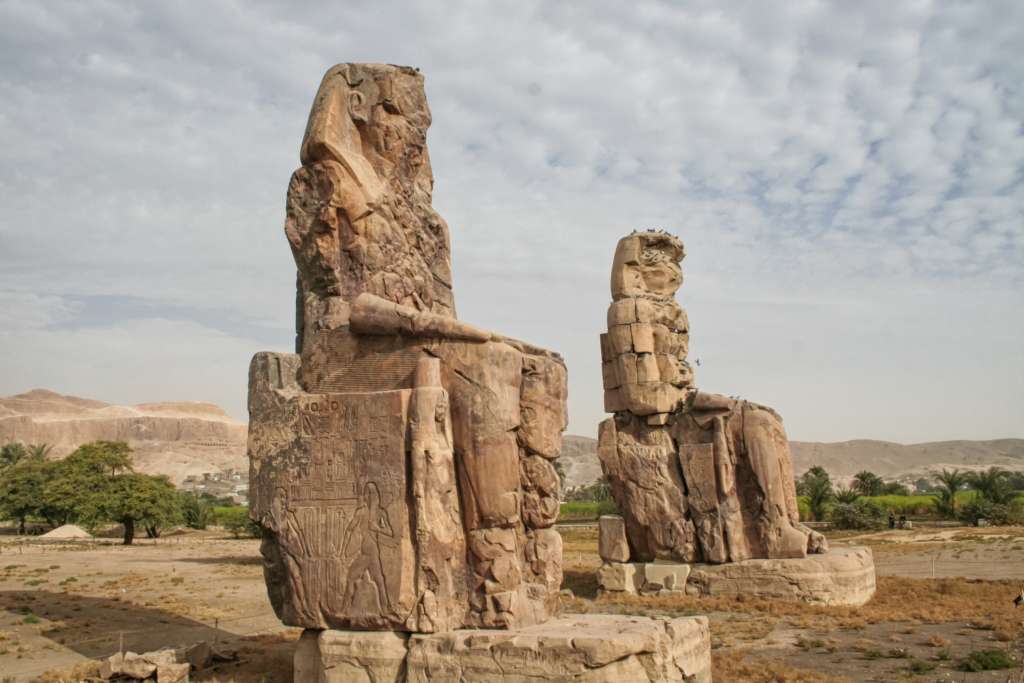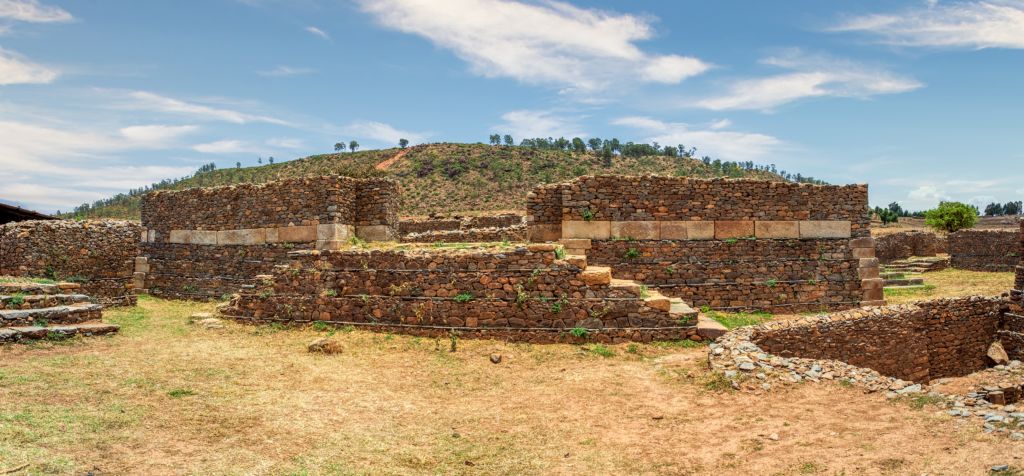9 great precolonial African kings you need to know
Western education regularly overlooks these monarchs, but theGrio never will. Meet the African kings who deserve recognition.
If you leave the telling of your story to others, you’ll miss the truth. For example, there were many more African kings than Shaka Zulu, the South African warring monarch a white film director introduced to some and reminded others about in a 1986 miniseries.
Too frequently, textbooks begin the story of African people at the onset of slavery and fail to acknowledge the thriving royal empires that existed long before European arrival and lethal colonization. But that regal legacy existed and continues even today as kings govern three African countries—Swaziland, Morocco, and Lesotho.

For Black History Month, theGrio reminds everyone that African history is rooted in sovereignty, not slavery. The royal African legacy consists of successful military strategists, church founders, supporters of the arts, and trailblazers in currency design and architectural feats.
Here’s a list of nine great precolonial Black African kings we should all know.
1. Endubis, Kingdom of Axum or the Aksumite Empire (Ethiopia) 270 CE to 300 CE
Axum, a powerful North East African Empire, rose to power after the decline of Ancient Egypt and Nubia. Endubis conquered Nubia, also known as the Kingdom of ancient Meroe. He controlled the horn of Africa, across Eritrea and the Red Sea and into the Arabian plateau.
Endubis was the first king of ancient Africa to mint gold, silver and bronze coins, and he established a precedent by having them imprinted with his face and motto. All subsequent Axumite (Ethiopian) emperors followed his example and continued the practice with their images and slogans.
2. Sundiata Kieta, Mali Empire (Mali, parts of Senegal, the Gambia, Guinea, Niger, Nigeria, Chad, Mauritania, and Burkina Faso) 1235 CE to 1255 CE
Sundiata Kieta founded the Ancient Mali Empire. His territory included present-day Gambia, Guinea, Guinea-Bissau, Ivory Coast, Mali, Mauritania, Niger, and Senegal. He is the renowned hero known as the Prince of the Mandinka people. The poem, Epic of Sundiata, traditionally told by “griots,” chronicles his life and exploits. The verses recount Sundiata’s fabled origins, his preordained rise to kingship, the formation of the Malian Empire, and his imperial conquests, starting with a victorious battle at Kirina on the Niger River before annexing territory equivalent to the modern aforementioned nations. Sundiata laid the foundation for what became one of the wealthiest and most powerful ancient West African empires. Under Keita’s leadership, Mali created the first oral charter for human rights, the Manden Charter. The charter contains, among other things, guidelines to create education systems, plans to guarantee food security, and a mandate to abolish slavery.
3. Musa Keita I “Mansa Musa,” Mali Empire (Mali, parts of Senegal, the Gambia, Guinea, Niger, Nigeria, Chad, Mauritania, and Burkina Faso) 1312 CE to 1337 CE
Although his given name was Musa Keita I, he adopted Mansa, which means ”King of Kings” or “Emperor.” Under his rule, Mali became one of the wealthiest kingdoms in Africa. From their gold and salt production, agriculture, imperialistic nature, and dynamic trade location, the kingdom flourished. Forbes named him the richest man of all time. Musa Kieta I is famous for enriching the great trading city of Timbuktu and establishing the library and Islamic universities.
His legendary pilgrimage to Mecca with more than 60,000 attendants and lavish giving of gold to the poor across the Sahel region, Egypt and the Middle East was chronicled by many. Historians suspect his largesse grabbed the attention of the Europeans and attracted them to West Africa. When Spanish mapmakers created The Caftan Atlas in 1375 CE, the section of West Africa was dominated by a depiction of Mansa Musa sitting on a throne, holding a nugget of gold in one hand and a golden staff in the other. After the atlas’ publication, Mansa Musa became known globally as a figure of extradordinary wealth. During his reign, he initiated extensive building projects in Mali including palaces, mosques and urban improvements.
4. Amenhotep III, Ancient Egypt (Egypt) 1386 BCE to 1353 BCE
Amenhotep III was one of Egypt’s finest pharaohs and the patriarch of a strong ancestral dynasty. He was the father of the legendary Akhenaten who instituted a series of changes in Egyptian religion, art and writing. He was also the grandfather of the famous King Tut, known as the “Boy King,” who took the throne at 9 years old. Egypt experienced prosperity, peace, and stability under Amenhotep’s rule. He commissioned magnificent building projects and monuments, including the first man-made lake outside his Malkata palace for his wife, the Great Queen Tiye. With his wife as a co-ruler, Amenhotep wielded extraordinary power in foreign policy and diplomacy throughout his reign. When Amenhotep III died, he left behind a country that had reached the pinnacle of its power.
5. Taharqa, Ancient Egypt & Nubia (Egypt) 690 BCE to 664 BCE
Taharqa was one of the Great Napatan Nubian Kings. After his father, Piye, successfully conquered Egypt in battle, Taharqa united the two kingdoms to form the largest African empire at the time. His kingdom stretched from Nubia’s fifth cataract (shallow sections) of the Nile River through present day Egypt and the Palestinian territory. Taharqa is credited with restoring Egypt’s peace and stability, as well as resuming building projects and arts that had been lost for generations in Egypt and Nubia. Biblical historians believe he is the renowned King of Kush who fought Sennacherib, King of Assyria, in the books of Kings 19:9 and Isaiah 37:9. There are several monuments to Taharqa, and in 2015, a great tomb sanctuary to the Egyptian God Osiris was unearthed in Upper Egypt. Its construction was traced back to the 25th Dynasty, possibly during Taharqa’s reign.

6. Ezana, Axum or Kingdon of Aksum (Ethiopia) 325 CE – 360 CE
Ezana is celebrated as the first Ethiopian king to convert his entire nation to Christianity. He was instrumental in the founding of the Ethiopic Church. He is also credited with bringing the powerful rival kingdom of Meroe (Nubia), now present-day Sudan to an end. The Axumite kingdom prospered during his rule. Several remarkable structures and obelisks were built during his reign. There was also a rise in international trade with the Greeks, Romans and Indians. Ezana’s coinage has been discovered in places like India and Greece.
7. Oba Ewuare, “Ewuare the Great,” Benin Empire (Nigeria) 1440 CE to 1473 CE
Oba Ewuare is regarded as the founder of the Benin Empire, a reformer of Benin City, and one of West Africa’s earliest warrior kings. During his reign, he expanded the territory of Benin to include 201 towns and villages. Oral histories praise Ewuare as a wise magician, doctor, and warrior who helped establish Benin as one of ancient West Africa’s most powerful and well-known empires.
Ewuare also encouraged artistic expression and pioneered the creation of bronze heads to commemorate Benin kings after their death. They are still prized historical works in museums in Nigeria and around the world. Ewuare’s encouragement of the arts resulted in the development of a thriving arts industry known for the manufacture of ivory, wood, and bronze works that are still in use today.
He is credited with establishing a number of cultural traditions such as the Igue festival, which is still one of Benin’s most important cultural events. Oba Ewuare also introduced beautiful coral beads to Benin, which are now key elements of royal decorating and cultural dressing in Benin. Coral beads are also used in many nations beyond Benin.
8. Sonni Ali, Songhai Empire (Senegal, Nigeria, The Gambia, Mauritania, Niger, Senegal, Guinea) 1464 CE to 1492 CE
The Songhai Empire grew to be the largest Muslim West African empire of all time under Sonni’s leadership. Sonni was a great military strategist who oversaw West Africa’s largest imperialist mission. His armies were amphibious, invading and patrolling the Niger River by land and water. The Songhai Empire reached its height during his reign, overtaking the Great Mali Empire and acquiring its lands as well as the fabled city of Timbuktu.
9. Oba Oduduwa, Oyo Empire (Nigeria) 12th century
Oduduwa is regarded as the forefather of Yorubaland and the Yoruba Dynasty. In Yoruba culture, he is regarded as “the hero, the warrior, the leader, and father of the Yoruba race.”
There is some debate as to where Oduduwa arrived from or when he formed Yorubaland and the Yoruba language, however, he defeated several existing communities and unified them into one state. The time and length of his reign are also not certain.
Oduduwa was not only the first ruler of a unified Ife, but also the progenitor of various independent royal dynasties in Yorubaland.
This story includes reporting by Justin ‘Jusdaremix’ Holmes.
TheGrio is now on your TV via Apple TV, Amazon Fire, Roku, and Android TV. Also, please download theGrio mobile apps today!


